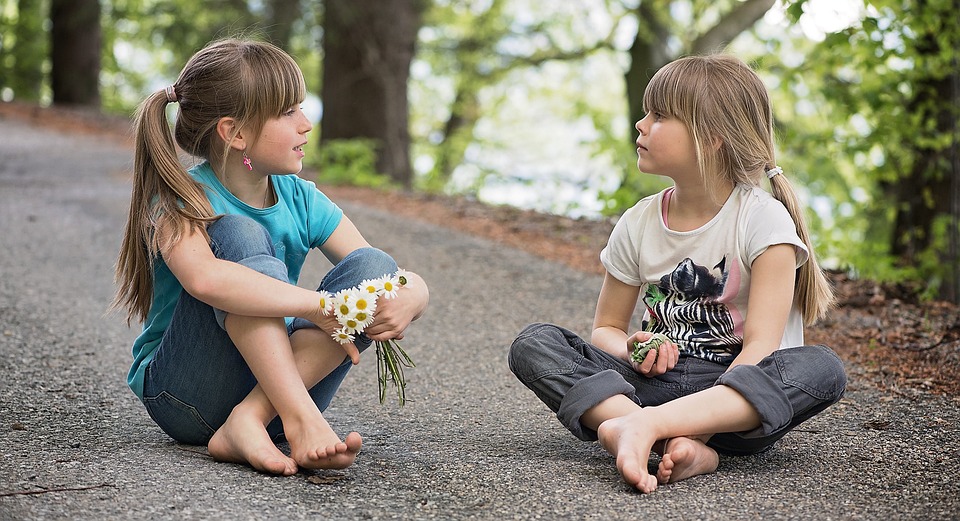
Talking to Your Child About a Suicide Death: A Guide For Parents and Caregivers
Written by: The National Child Traumatic Stress Network and New York Life
The death of a loved one is the most difficult life event that many children ever experience. A death due to suicide can be especially hard to face. Parents and caregivers may feel overwhelmed as they try to decide what to tell their children about a suicide death while struggling with their own grief over how the person died. We have found the following tips to be useful to caregivers in preparing to tell their children about a suicide death and helping children to grieve in healthy ways.
Children know what they’re not supposed to know.
It is easy to understand why caregivers struggle with the very difficult decision about whether, how, and when to tell their children about a suicide death. But children almost always know when adults are not sharing important information about a death. Although caregivers may believe they are protecting their children by hiding the fact that a loved one died by suicide, this can actually lead to more problems down the road. For example, children can become even more upset, worried, or angry if they are left to guess or imagine how the person died. Children may also begin to wonder whether their caregivers can be trusted with other issues or information. This lack of trust can make it harder for children to talk to their caregivers at a time when they most need and want open and honest communication. By giving children truthful, age-appropriate information about a suicide death, caregivers can help their children to grieve in normal and healthy ways.
Explaining “why”
When explaining a suicide death to children, it is helpful to use clear, simple language, while also thinking about their developmental stage (what they can understand) and their own individual grief reactions. There are many different reasons why a person may die by suicide, and it is often hard (and sometimes impossible) to know exactly why it happened. This uncertainty can make understanding and explaining the death much more difficult. You can begin the conversation by pointing out (if appropriate) that some people die by suicide because they suffer from a serious mental health problem:
“Some people have serious mental health problems, like severe depression, that make it very hard for them to think clearly and make good decisions.”
You can also describe how mental illness can lead people to feel trapped, helpless, or hopeless:
“Because ___ felt hopeless and wasn’t thinking clearly, ____ wasn’t able to think of other more helpful choices or better ways of coping besides suicide.”
It is helpful to let children know that most of the time, people with serious mental health problems can get the help they need, through counseling or medication, so they don’t feel the need to end their lives.
It can also be comforting to let children know that you can’t “catch” a mental illness like depression the same way you catch a cold or the flu:
“When someone in the family has a serious mental health problem and is not thinking clearly, it does not mean that other family members will have the same problem. Even though ___ died by suicide, it does not mean that other family members will too.”
Explaining “how”
After giving basic information and facts about how the person died, it is helpful to let your child ask questions and let them guide the conversation so they don’t feel overwhelmed. Children are often able to handle only small pieces of information at a time and ask only for information that they are ready to hear. They may want to have the same conversation with you at a later time and may ask you similar questions (often many times), as they try to make sense of the death or hear new information. This “revisiting” may happen naturally as kids grow and better understand what it means to die by suicide. It is helpful to let your child know that you are open to hearing any other questions they may have, whenever they may have them:
“I am here to answer any questions you have about how ______ died. I may not always have all of the answers, but I will always do my best to be honest and share with you what I do know.”
Remember that the behaviors you show toward your child can be just as powerful as the specific words you use. For example, making good eye contact, holding their hand, hugging, and even just being there to listen can go a long way towards helping your child feel understood, comforted, and protected.
Addressing “unspoken” thoughts and feelings
It can be helpful to let children know that it is common for people to have many different feelings after a suicide death and that it is okay to express them:
“It’s okay to have strong feelings about how _____ died. It’s normal to feel confused, angry, very sad, or even embarrassed after someone dies by suicide.”
Some children may believe they are to blame for the death, even though they may not share these thoughts or feelings openly. Some children may also believe that if the person had loved them enough, they would not have died by suicide. If you think that your child is feeling guilty or somehow responsible for the death, it can help to tell them directly that it is not their fault. You can also reassure your child by letting them know how much the person loved and cared for them.
Your role as their caregiver
Remember that your job as a caregiver is not to completely take away your child’s pain (grief is a naturally painful experience). Instead, your role is to help your child to share whatever thoughts or feelings they may have and to feel understood and safe in doing so:
“No matter what you’re feeling, it often helps to talk about it. I want you to know I’m here to listen whenever you need me.”
You may not have all the answers about what caused your loved one to die by suicide, and that’s okay. Know that it is also okay for you to express your emotions in front of your child. Allowing your child to see you feeling sad or even crying sends the message that it is normal to be sad and that crying is natural when you miss someone you love:
“Sometimes I may get upset when we talk about ____. But it is normal to feel sad and cry when someone you care about dies. The more we share our feelings with others, like how much we miss the person, the better we’ll feel as time goes on.”
On the other hand, if you find yourself unable to carry out your daily work or family responsibilities because of your own grief, you may need extra support. Caregivers are often so worried about caring for their children after a suicide death that they forget to care for themselves. Remember that the care you may need (including support from family, friends, and/or a therapist) is just as important as caring for your child. Getting the help you need will also make it easier for you to be there for your child and can be an important opportunity for you to model good self-care—including asking for help if you need it.
How to know if your child needs additional help
If you notice one or more of the following behaviors, your child may need an assessment by a trained professional who can help decide whether they would benefit from grief support or more specialized grief therapy.
- Wishing to be back with the person who died (“I keep hoping I might die so I can see ___ again”); although common among bereaved children, these fantasies can lead to true suicidal thoughts or behaviors.
- Having very frequent thoughts about death and dying, including the way in which the loved one died (“I can’t stop worrying that I’ll probably die the same way as ____ died”)
- Talking about or even just mentioning a wish to die, or a wish to hurt oneself or others
Other high-risk or “red flag” behaviors may include:
- Trouble keeping up with daily tasks (e.g., missing school and/or unable to finish assignments)
- Continuing to show signs of extreme sadness (including frequent crying, low energy, staying away from friends or family, appetite and sleep changes) for more than 6 months since the death happened Risky or dangerous behavior (drug or alcohol use, reckless driving, stealing, etc.)
- Appearing numb or “in another world” when the topic of the death comes up
Resources
Suicide risk may be more common in children after experiencing the death of a loved one by suicide. If your child expresses any thoughts of suicide, be sure to reach out and let a counselor or therapist know. In the case of an emergency, or if you are concerned about a family member who may be at risk for suicide, you can call, text or chat 988.
The National Child Traumatic Stress Network, & New York Life. (2019). Talking to Your Child About a Suicide Death: A GUIDE FOR PARENTS AND CAREGIVERS. The National Child Traumatic Stress Network. Retrieved January 9, 2023, from https://www.nctsn.org/resources/talking-to-your-child-about-a-suicide-death-a-guide-for-parents-and-caregivers
